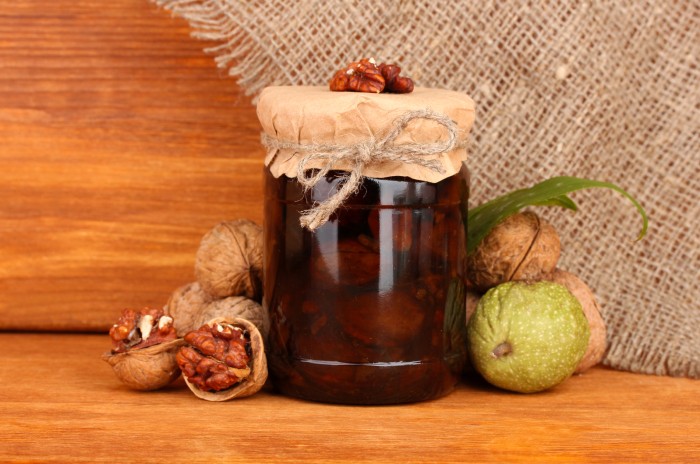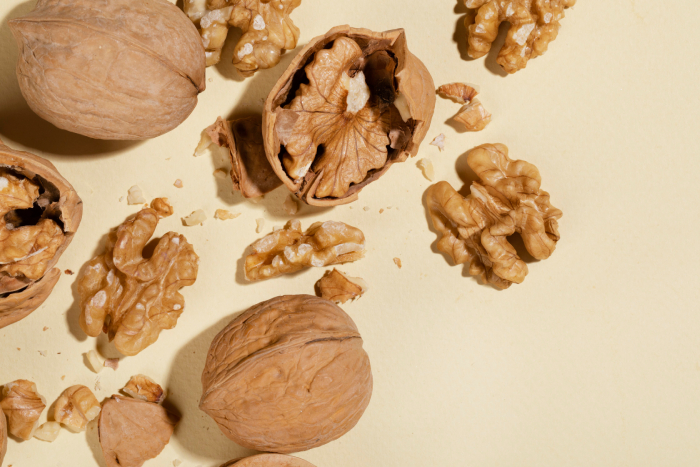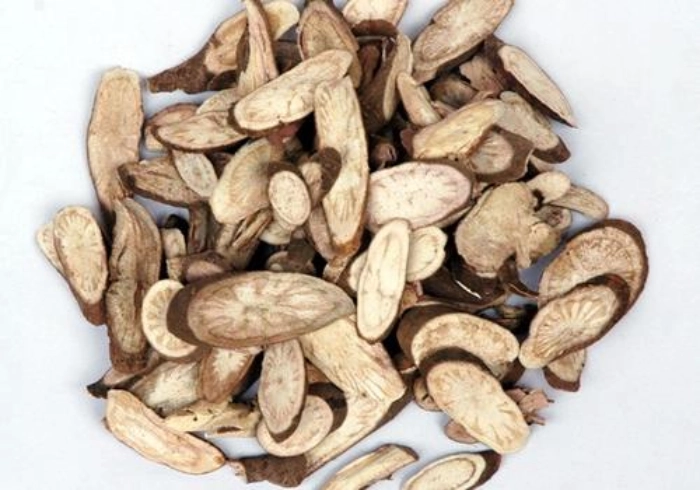Hey there, health nuts! Today, we’re diving deep into the fascinating world of walnut trees. These towering giants have been dropping their nutty goodness on us for centuries, and it’s high time we gave them the spotlight they deserve. So, grab a handful of walnuts, and let’s get cracking!
Walnut trees are more than just pretty faces in the forest. They’re like the overachievers of the plant world, producing both beautiful wood and delicious nuts. Talk about multitasking! These leafy legends have been a part of human history for thousands of years, and their popularity shows no signs of waning.
Walnut trees come in various species, but two main types steal the show: the English walnut (Juglans regia) and the black walnut (Juglans nigra). The English walnut is the popular kid in school, known for its tasty nuts that we all love to munch on. On the other hand, the black walnut is like the mysterious bad boy – a little harder to crack but totally worth the effort.
Fun fact: Did you know that the English walnut isn’t actually from England? It’s originally from Persia! Talk about an identity crisis, right? These walnut trees have certainly traveled far and wide to grace our orchards and forests.
The Nutty Anatomy: Breaking Down the Walnut Fruit
Now, let’s get up close and personal with the star of the show – the walnut fruit. Yes, you heard that right. Walnuts are technically fruits, not nuts. Mind. Blown.
The walnut fruit is like a Russian nesting doll of deliciousness. On the outside, you’ve got a green, fleshy covering called the husk. It’s like nature’s own eco-friendly packaging. Beneath that is the hard shell we all know and love (or hate, depending on how many times you’ve pinched your fingers trying to crack it). And finally, inside that fortress of nutty goodness is the walnut seed – the brain-shaped nugget of nutrition we’ve all been waiting for.
But wait, there’s more! Inside that walnut seed is where the magic happens. That’s where you’ll find the walnut seed oil, which is like liquid gold for health enthusiasts. But what porosity is walnut seed oil for? Well, it turns out that walnut seed oil has a relatively high porosity, which means it’s easily absorbed by the skin. This makes it a popular ingredient in cosmetics and skincare products.
Black Walnut Seeds: The Dark Horse of the Nut World
Let’s shine a spotlight on the underdog of the walnut world – the black walnut seeds. These little guys might not be as famous as their English cousins, but they’re packing some serious nutritional punch.
Black walnut seeds are like the ninjas of the nut world. They’re harder to crack, sure, but once you get inside, you’re in for a treat. They’ve got a stronger, more earthy flavor than English walnuts, which makes them perfect for adventurous foodies looking to spice up their nut game.
But it’s not just about taste. Black walnut seeds are nutritional powerhouses. They’re loaded with omega-3 fatty acids, antioxidants, and a whole alphabet of vitamins. It’s like nature’s multivitamin, wrapped up in a tough, black shell.
The Eastern Walnut: A Nutty Adventure
Now, let’s take a little detour to the east and talk about the eastern walnut. This variety, also known as the butternut or white walnut, is like the cousin who shows up to the family reunion with a guitar and a man bun. It’s a little different, but in the best way possible.
The eastern walnut has a milder, sweeter taste compared to its walnut relatives. It’s like the dessert of the walnut world – perfect for those with a sweet tooth. But don’t let its sweetness fool you. This nut is still packed with all the good stuff you’d expect from a walnut tree.
Walnut Seed Extract: The Superhero Serum

Okay, health enthusiasts, hold onto your hats because we’re about to dive into the world of walnut seed extract. This stuff is like a superhero serum for your body.
Walnut seed extract is basically all the goodness of walnuts concentrated into a potent form. It’s packed with antioxidants, omega-3 fatty acids, and a bunch of other hard-to-pronounce compounds that are great for your health.
But what can it do for you? Well, studies have shown that walnut seed extract might help with everything from reducing inflammation to protecting your brain health. It’s like having a tiny army of health defenders in your body!
Are Walnuts Edible? (Spoiler Alert: Yes!)
Now, I know what you’re thinking. “Of course walnuts are edible, you nut job!” (See what I did there?) But believe it or not, this is a question that pops up more often than you’d think.
So, let’s set the record straight: Yes, walnuts are absolutely edible. In fact, they’re not just edible – they’re downright delicious and incredibly good for you. Whether you’re munching on them raw, toasting them for a salad, or baking them into a decadent walnut pie, these little nuggets of nutrition are always a good choice.
But here’s a word of caution: while the nut itself is edible, the same can’t be said for other parts of the walnut tree. The leaves, bark, and especially the green husks around unripe walnuts contain a compound called juglone, which can be toxic. So stick to the nuts, folks!
Nutty Numbers: Walnut Facts That’ll Blow Your Mind
Alright, trivia buffs, this section is for you. Let’s dive into some mind-blowing walnut facts that’ll make you the life of your next dinner party (or at least the most interesting person at the snack table).
- Ancient Snack Attack: Walnuts are one of the oldest tree foods known to humans, with a history dating back to 7000 B.C. That’s older than your grandma’s secret cookie recipe!
- Space Nuts: Walnuts were among the foods taken to the moon by Apollo 13 and Apollo 14 astronauts. Talk about out-of-this-world snacks!
- Brain Food: The ancient Romans called walnuts “Jupiter’s royal acorn.” They believed walnuts were food for the gods and could boost intelligence. Looks like they were onto something!
- Walnut Wizardry: In some parts of Europe, walnuts were used in witchcraft and thought to ward off evil. Who needs garlic when you’ve got walnuts?
- Nutty Art: The brown dye from walnut husks was used by early settlers to dye hair and by famous artists like Leonardo da Vinci and Rembrandt in their drawings.
The Nutty Professor: What Science Says About Walnuts
Now, let’s get our lab coats on and dive into some science. (Don’t worry, I promise to keep it more “Bill Nye” than “Albert Einstein.”)
Research has shown that walnuts are like little nutritional powerhouses. They’re packed with omega-3 fatty acids, antioxidants, and a whole bunch of vitamins and minerals. But what does this mean for you?
Well, studies suggest that regularly snacking on walnuts might help:
- Boost brain function (they don’t look like little brains for nothing!)
- Support heart health
- Manage weight (yes, even though they’re high in calories)
- Reduce inflammation in the body
- Lower risk of certain types of cancer
It’s like nature’s own little multivitamin, wrapped up in a crunchy, delicious package. Who said medicine can’t taste good?
How to Get Your Walnut On: Tips and Tricks

So, now that we’ve convinced you that walnuts are basically the superheroes of the nut world, you’re probably wondering how to incorporate more of these nutritional nuggets into your diet. Fear not, fellow nut enthusiasts! I’ve got you covered.
- The Classic Snack: Keep a bowl of walnuts on your desk for a quick, healthy snack. Just try not to get too distracted by their brain-like appearance. (“I’m not procrastinating, I’m studying anatomy!”)
- Salad Superstar: Toss some chopped walnuts into your salad for a satisfying crunch. It’s like adding tiny flavor explosions to your bowl of greens.
- Smoothie Booster: Throw a handful of walnuts into your morning smoothie for an extra nutritional kick. It’s like a protein shake, but tastier.
- Baking Buddy: Use ground walnuts as a flour substitute in baking for a gluten-free, nutrient-dense treat. Your taste buds and your waistline will thank you!
- Pesto with a Twist: Swap out pine nuts for walnuts in your homemade pesto. It’s a great way to shake up your pasta game and get those omega-3s.
The Walnut Tree: A Majestic Giant
Now, let’s take a moment to appreciate the walnut tree itself. These aren’t your average backyard saplings, folks. Walnut trees are the gentle giants of the forest, often growing to impressive heights of 100 feet or more!
The walnut tree is like the wise old grandpa of the forest. It takes its sweet time growing, but boy, does it deliver. These trees can live for hundreds of years, providing generations with their nutty bounty. Talk about a long-term investment!
But walnut trees aren’t just about the nuts. Their wood is highly prized in furniture making and woodworking. It’s like these trees are the ultimate multi-taskers – feeding us, sheltering us, and furnishing our homes. Is there anything walnut trees can’t do?
English Walnuts: The Cosmopolitan Nut
Let’s circle back to our friend, the English walnut. Despite its name, this variety of walnut trees is actually native to Persia (modern-day Iran). It’s like the world traveler of the nut world, having spread across Europe and eventually making its way to America.
English walnuts are the ones you’re most likely to find in your local grocery store. They’re prized for their mild, sweet flavor and thin shells that are relatively easy to crack. These nuts from walnut trees are not only delicious but also incredibly versatile. You can use them in everything from salads to desserts, and they’re a staple in many cuisines around the world.
The Secret Life of Walnut Trees
Did you know that walnut trees have a secret superpower? They practice something called allelopathy, which is a fancy way of saying they produce chemicals that prevent other plants from growing too close to them. It’s like they’ve got their own personal force field!
This is why you often see walnut trees standing alone in fields or gardens. They’re not antisocial; they’re just very particular about their personal space. So next time you see a lone walnut tree, remember – it’s not lonely, it’s just asserting its dominance!
Walnut Trees Through the Seasons
Walnut trees are like nature’s calendar. In spring, they burst into life with new leaves and catkins (those long, dangling flower clusters). Summer sees the development of the walnut fruit, hidden inside their green husks. Come fall, the husks split open, revealing the familiar wrinkled shell of the walnut. And in winter, the bare branches of walnut trees create stunning silhouettes against the sky.
It’s like watching a year-long performance, with each season bringing a new act in the life of these magnificent trees.
The Global Impact of Walnut Trees
Walnut trees aren’t just pretty faces in our local parks and forests. They play a significant role in global agriculture and economics. Countries like China, the United States, Iran, and Turkey are major producers of walnuts, with California alone producing over 99% of the commercial U.S. supply and two-thirds of the world’s supply. That’s a lot of nuts!
The walnut industry provides jobs for thousands of people worldwide, from farmers to processors to retailers. It’s like these trees are the unsung heroes of the global economy. Who knew that such a small nut could have such a big impact?
Walnuts in Culture and Tradition
Throughout history, walnut trees and their nuts have held special significance in various cultures. In ancient Persia, they were symbols of royalty. In some European traditions, walnuts were thought to ward off evil spirits. And in many Asian cultures, walnuts are considered symbols of intelligence due to their resemblance to the human brain.
It’s fascinating how these nuts from walnut trees have woven themselves into the fabric of human culture and tradition. They’re not just food; they’re a part of our collective story.
The Future of Walnut Trees

As we look to the future, walnut trees continue to play an important role in our world. With increasing interest in plant-based diets and sustainable agriculture, walnuts are becoming more popular than ever.
Researchers are also exploring new ways to use walnuts and walnut tree by-products. From walnut oil in cosmetics to walnut shell flour as a biodegradable plastic alternative, these versatile trees are full of untapped potential.
But with climate change and deforestation threatening many species, it’s crucial that we protect and preserve our walnut trees. After all, they’ve been our nutty companions for thousands of years – let’s make sure they stick around for thousands more!
Wrapping Up Our Nutty Adventure
And there you have it, folks – a whirlwind tour through the wonderful world of walnut trees! From their ancient origins to their bright future, these trees have proven themselves to be true marvels of nature.
Whether you’re munching on walnuts for a healthy snack, admiring a stately walnut tree in your local park, or using walnut oil in your latest culinary creation, take a moment to appreciate these incredible trees. They’re not just a source of delicious nuts; they’re living pieces of history, silent guardians of our forests, and unsung heroes of our ecosystem.
So the next time you crack open a walnut, remember – you’re holding a little piece of nature’s magic in your hands. Here’s to walnut trees, nature’s nutty wonders!



